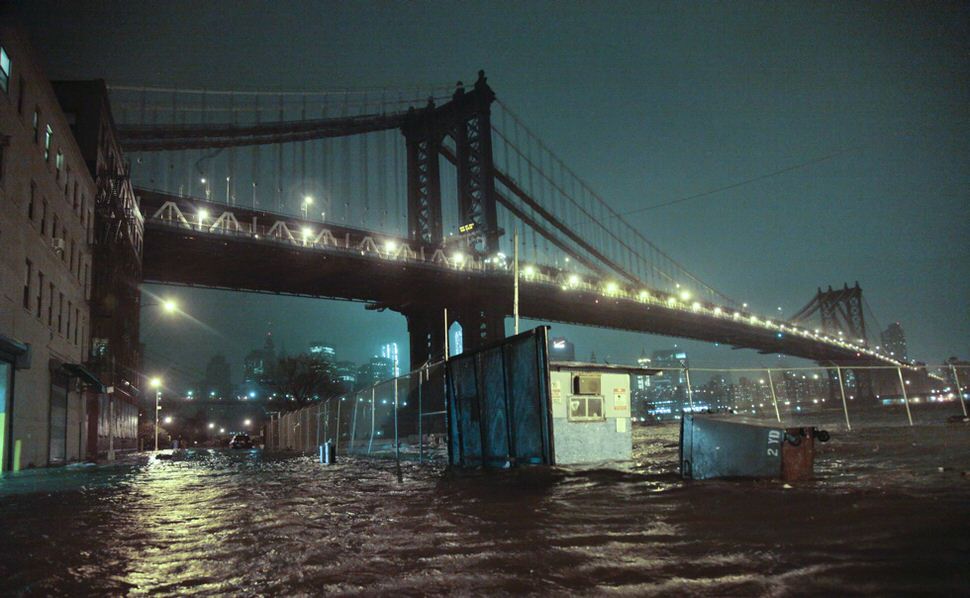One of the things that makes Sandy different from Katrina is that it’s a relatively clean story. The lessons of Katrina were numerous and painful—they had to do with race, with class, with the willful incompetence of a government that had put a professional Arabian horse fancier in charge of its rescue efforts.
Sandy, by contrast, has been pretty straightforward. It’s hit rich, poor, and middle class Americans with nearly equal power, though of course the affluent always have it easier in the aftermath of tragedy. Government officials prepared forthrightly for its arrival, and have refrained from paralysis and bickering in its wake. Which allows us to concentrate on the only really useful message it might deliver: that we live in a changed world, where we need both to adapt to the changes, and to prevent further changes so great that adaptation will be impossible.
Science and its practical consort Engineering mostly come out of this week with enhanced reputations. For some years now, various researchers have been predicting that such a trauma was not just possible but almost certain, as we raised the temperature and with it the level of the sea—just this past summer, for instance, scientists demonstrated that seas were rising faster near the northeast United States (for reasons having to do with alterations to the Gulf Stream) than almost anyplace on the planet. They had described, in the long run, the loaded gun, right down to a set of documents describing the precise risk to the New York subway system.
As nature pulled the trigger in mid-October, when a tropical wave left Africa and moved into the Atlantic and began to spin, scientists were able to do the short-term work of hurricane forecasting with almost eerie precision. Days before Sandy came ashore we not only knew approximately where it would go, but that its barometric pressure would drop below previous records and hence that its gushing surge would set new marks. The computer models dealt with the weird hybrid nature of the storm—a tropical cyclone hitting a blocking front—with real aplomb; it was a bravura performance.





